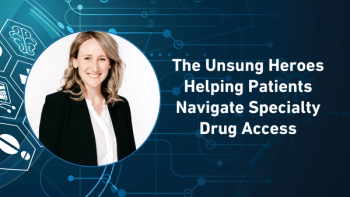
Doximity crosses 50% line of engagement with physician population
'Stay tuned' for interactions directly with pharma companies, says CEO Jeff Tangney
Nestled in the high-tech Silicon Valley area, Doximity has positioned itself as a state-of-the-art, social-media-driven community, but one dedicated exclusively to physicians. The company has announced that its signed-on membership among physicians is now over 400,000, representing roughly half of all prescribing physicians in the US and a quadrupuling since early
However, unlike other physician-oriented online communities, Doximity neither accepts promotional dollars from pharma companies, nor integrates with vendors of drug-data services, marketing organizations or electronic health records (EHR) systems. In fact, the company sees itself at somewhat cross-purposes with EHR vendors. “It’s not just interoperability among EHR systems that’s the problem for that technology,” says Tangney, “it’s that the hospital systems that install them basically don’t want physicians communicating with each other outside the walls of their system. We represent a ‘back channel’ that allows physicians to communicate with each other.”
One distinction of Doximity is that it requires a fairly rigorous vetting process to ensure the credentials of subscribers; only appropriately licensed healthcare providers are allowed in. Another is that communications are not anonymous—physicians know who is communicating with them, unlike chat rooms where unknown persons try to connect with each other. And the communications can be rapid: Tangney cites a case where a physician, confronting with a pediatric patient in a seizure, needed to know quickly what meds the patient was taking. Nominally, an EHR system could provide that info (if both the physician and the patient’s healthcare provider were on the system), but that avenue wasn’t available. A quick communication to the provider generated the needed information for a potentially life-saving situation.
Without a subscription cost, healthcare provider support or an advertising platform (the usual means for social media sites to generate revenue), how will Doximity thrive? Tangney says that it has already located one valuable revenue stream: physician recruitment, a process that can cost tens of thousands of dollars for an employer to pay to locate and hire the right physician. Doximity has relationships with the recruiting offices of 300 hospital systems, says Tangney, and the business is growing nicely. Will there be a place for the pharma industry to interact with this community? “Stay tuned,” he says. The company is piloting several programs, including one for clinical trial site recruitment, and another for characterizing key opinion leader networks. But the priority for now will remain becoming an essential communication tool for physicians.
Newsletter
Stay ahead in the life sciences industry with Pharmaceutical Commerce, the latest news, trends, and strategies in drug distribution, commercialization, and market access.





